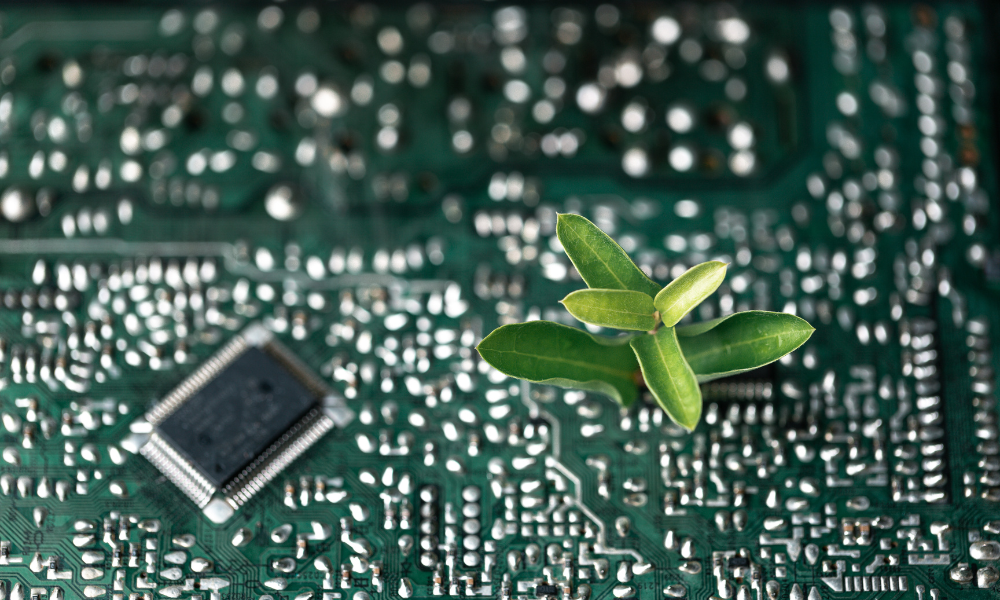Introduction
In our increasingly digital world, data centers and IT infrastructure have become the backbone of nearly every industry. From streaming your favorite show to processing financial transactions, these facilities power modern life—but they also come with significant environmental costs. As global data center energy demand is projected to grow by up to 50% over the next five years, organizations must adopt Green IT strategies to mitigate carbon emissions, reduce energy consumption, and minimize e-waste.
This blog post explores practical approaches for making data centers and IT operations more sustainable, balancing performance, reliability, and environmental stewardship.
The Environmental Footprint of Data Centers
-
Energy Consumption
Data centers account for roughly 1% of global electricity use, with high-density server racks, cooling systems, and network equipment all drawing substantial power. -
Carbon Emissions
Depending on the local grid’s energy mix, a single large data center can emit tens of thousands of metric tons of CO₂ annually. -
Water Usage
Traditional chillers and cooling towers can consume millions of gallons of water each year for heat rejection. -
E-Waste
Rapid hardware refresh cycles lead to millions of tons of electronic waste, much of which contains hazardous materials.
Given these impacts, transitioning to greener operations is both an environmental imperative and a business opportunity—reducing costs, enhancing resilience, and meeting stakeholder expectations for corporate responsibility.
Core Green IT Strategies
1. Improve Energy Efficiency
-
Optimize Power Usage Effectiveness (PUE)
Strive for a PUE close to the theoretical ideal of 1.0. Techniques include hot-aisle/cold-aisle containment, variable-speed fans, and high-efficiency uninterruptible power supplies (UPS). -
Server Virtualization & Consolidation
Running multiple virtual machines (VMs) on fewer physical servers reduces idle hardware and boosts utilization rates, cutting both energy and cooling demands. -
Dynamic Workload Scheduling
Use workload orchestration to shift computing tasks to off-peak hours or data centers powered by cleaner energy.
2. Embrace Renewable Energy
-
On-site Generation
Install solar panels or wind turbines at data center sites to directly offset electricity use. -
Power Purchase Agreements (PPAs)
Secure long-term contracts for renewable energy from regional generators, ensuring a steady green power supply. -
Renewable Energy Credits (RECs)
Purchase RECs to balance out grid-based emissions where direct renewables aren’t feasible.
3. Innovative Cooling Technologies
-
Liquid Cooling & Immersion Cooling
Replacing traditional air-cooled systems with liquid-based solutions can increase heat transfer efficiency by up to 10×, drastically cutting fan energy use. -
Free Cooling & Air-Side Economizers
Leverage ambient outdoor air or water temperatures to chill servers when conditions allow, reducing reliance on mechanical chillers. -
Thermal Energy Storage
Shift cooling loads to off-peak hours by freezing water or ice overnight, then use stored cooling during the day.
4. Sustainable Hardware Practices
-
Circular Economy & Refurbishment
Extend the lifecycle of servers and networking gear through refurbishment, resale, or donation programs. -
Eco-Design & Supplier Standards
Partner with manufacturers who prioritize low-carbon production processes, recyclable materials, and modular designs. -
E-Waste Recycling & Take-Back
Implement strict e-waste disposal policies and collaborate with certified recyclers to recover valuable metals and reduce landfill waste.
5. Data Center Siting & Design
-
Hyperscale & Modular Facilities
Prefabricated, containerized data centers can be rapidly deployed with optimized airflow, power, and footprint, minimizing construction waste. -
Geographic Optimization
Place facilities in cooler climates to capitalize on free cooling, or near renewable energy sources and reliable grid infrastructure. -
Green Building Certifications
Aim for LEED, BREEAM, or ISO 50001 certifications to benchmark and validate sustainable design and operations.
Case Studies in Green IT
Google’s Carbon-Neutral Data Centers
Google achieves 100% carbon neutrality by matching its entire electricity consumption with renewable energy purchases through PPAs, while innovating with machine-learning-driven cooling controls to maintain an average PUE of 1.10.
Microsoft’s Project Natick
In a groundbreaking trial, Microsoft deployed a submerged, off-shore data center cooled by seawater, achieving up to 90% reductions in cooling energy compared to traditional facilities.
Equinix’s Circular Economy Initiative
Equinix has committed to reusing or recycling 90% of its decommissioned server hardware, partnering with certified vendors to refurbish equipment for secondary markets.
Best Practices for Implementation
-
Set Clear Sustainability Goals
Define targets for PUE, renewable energy usage, and e-waste reduction, embedding them into corporate KPIs. -
Engage Cross-Functional Teams
Align IT, facilities, procurement, and sustainability leaders to ensure cohesive strategy execution. -
Leverage Data & Analytics
Continuously monitor energy, water, and waste metrics in real time to identify inefficiencies and verify improvements. -
Invest in Training & Culture
Educate staff on Green IT principles, and foster a culture where sustainable practices are rewarded. -
Report Transparently
Include Green IT metrics in sustainability reports or disclosures, showcasing progress to investors, customers, and regulators.
Conclusion
Reducing the environmental footprint of global data centers and IT infrastructure is no longer optional—it’s a strategic necessity. By implementing energy-efficient designs, embracing renewables, adopting innovative cooling, and championing circular hardware practices, organizations can drive significant cost savings, lower carbon emissions, and build long-term resilience. As digital transformation accelerates, proactive Green IT strategies will be key to aligning business growth with planetary health.
